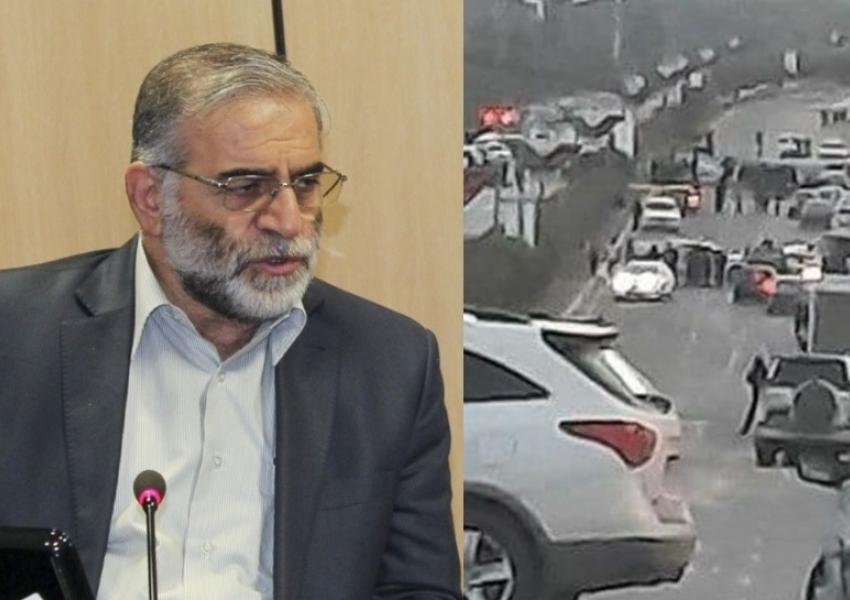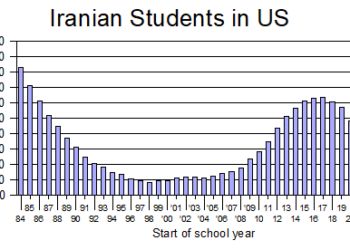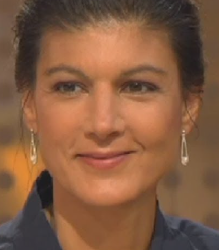December 25 2020

After fumbling around with several conflicting stories of how nuclear scientist Mohsen Fakhrizadeh was killed, the regime seems to have settled on a tale that practically everyone can agree is fake.
Various Pasdar officers over several days provided the explanation, which conflicted completely with earlier reports, which said a truck had exploded in the roadway, forcing Fakhrizadeh’s car to stop and a band of machine-gun toting killers, perhaps as many as a dozen, then emerged from nowhere to spray his car with bullets before they disappeared into the mists.
The new story said the bomb exploded after the gunfire and that there were no gun-toting assassins on the site. Instead, a machinegun was mounted on the parked pickup truck. Guided by satellite, artificial intelligence and facial recognition, the machine-gun picked up Fakhrizadeh as his car approached, firing nine shots and riddling him with bullets. Fakhrizadeh then got out of the car and one of 11 bodyguards accompanying him sprawled atop him to protect the nuclear scientist and the guard was then hit by four bullets.
Other bullets were fired by his bodyguards; some bullet holes were seen in the curb, for example. The parked Nissan pickup truck then blew up.
Speaking at a commemoration ceremony for the assassinated scientist, Brigadier General Ramezan Sharif, the official spokesman for the Pasdaran, said, “Advanced electronic instruments guided by satellite were used in the assassination of Martyr Fakhrizadeh.”
He said, “The Zionists are well aware that their measures [against Iran] will not go unanswered; this has been proven to them in the past.” The last time Iran retaliated against Israel for the assassination of nuclear scientists, it plotted attacks in at least three countries, managed to injure the wife of one Israeli military officer in New Delhi, saw one of its assassins blow off his own legs while he and two other plotters were arrested and convicted in Thailand, and had a bomb placed on an Israeli diplomatic car in Georgia discovered and dismantled. The trio in Bangkok was freed in October as a result of a prisoner swap.
Fakhrizadeh, the head of the Iranian Defense Ministry’s Organization of Defensive Innovation and Research, was killed in Absard, a town about 65 kilometers (40 miles) east of Tehran, November 27.
Officials have variously blamed Israel, the United States and the Mojahedin-e Khalq. All that is based on supposition. No evidence has been provided. However, it would be hard to find anyone who didn’t believe that Israel was at the center of the plot.
The Intelligence Ministry subsequently said it had identified the individuals involved in the assassination. It did not name them or even give their number. Even though the regime now says the killing was entirely automated, it would have taken some people inside Iran to set up the truck on the roadway used by Fakhrizadeh, who was with his wife going to visit her family in Absard.
On December 8, the national security aide to Majlis speaker Mohammad-Baqer Qalibaf, Hossain Amir-Abdollahian, said “some” of those involved in the plot had been arrested. He did not say how, where or when they were arrested or what role they played in the killing. No one else has yet repeated what Abdol-lahian said. Abdollahian also said the Americans were involved. But he did not claim to have evidence of that. He simply said the “Zionists” could not have carried out the attack alone and required the help of some other intelligence service, like the CIA.
In the investigation after the previous series of assassinations of nuclear scientists almost a decade ago, the regime arrested a multitude of people—a classic case of “roundup the usual suspects.” Later, most were freed, including even those who had provided televised confessions.
The explanation from the Pasdaran officials was far from complete. It did not say if Fakhrizadeh was driving the car or a bodyguard. There were bullet holes head-high in the windshield of Fakhrizadeh’s car. But no one said a driver was hit, implying that Fakhrizadeh was driving. The explanation also said Fakhrizadeh was only centimeters from his wife when he was shot implying he was in the car seated beside her. But the explanation said the bullet that killed him severed his spinal cord, which would have been below dashboard level and not a likely site for a wound if he was driving. The explanations said nothing about any head wound, which would have been the most likely site of injury given the large bullet hole in the driver’s side of the windshield.
(Fakhrizadeh’s widow later appeared on state television and said, “He wanted to be martyred and his wish came true.”)
However, the explanations all said Fakhrizadeh got out of his car after the shooting. Bodyguards normally instruct the people they protect to stay inside a car if gunshots are heard. Tehran news accounts said the car was bulletproof, but experts who looked at photos of the car said it was just an ordinary car without bulletproofing.
The official explanation said Fakhrizadeh was not hit in the initial gunfire, but stopped his car and got out to check, thinking the sounds he had heard were from objects on the road he had run over or from the engine malfunctioning.
Since Fakhrizadeh is dead, that is but speculation. But if Fakhrizadeh were injured in the car, he might well have sought to get out of the car and away from the site where he was shot. Photos showed much blood in the roadway beside the car, which could have been both Fakh-rizadeh’s and his guard’s. But that would mean the machinegun was redirected when Fakhrizadeh emerged from the car. When the bodyguard was supposedly shot while sprawled over Fakhri-zadeh’s body, the machinegun could not have been directed by facial recognition.
Admiral Ali Fadavi, deputy commander of the Pasdaran, said, “We’ve checked and found that a satellite was controlling the machinegun remotely and there was no terrorist at the scene.” He said the shooting was so accurate that no bullet struck Fakh-rizadeh’s wife, who was seated beside him, implying that Fakhri-zadeh was hit while inside the car.
Fakhrizadeh’s car was understood to be in the middle of a four-car convoy. But the explanation did not say what happened to the one or two cars that would have been ahead of Fakhri-zadeh’s vehicle as they approached the parked pickup truck. The implication was that the car or cars in front of Fakh-rizadeh passed the truck before the facial recognition gear picked up Fakhrizadeh and set off the machinegun.
One car, said the official explanations, left the convoy and sped ahead to check the destination site. That might mean Fakhrizadeh’s car was in the lead. But the explanations did not say that, and professional practice would not put the car of the protected person in the lead. Yet again, the official explanations were far from complete or professional and left much to supposition.
The explanations said the machinegun in the back of the parked pickup was covered by stacks of wood so no one would see the weapon. They said the truck was 150 meters ahead of where Fakhrizadeh died. Officials said the truck was blown up after the assassination, presumably to kill the Pasdar bodyguards.
The investigation showed that the owner of the Nissan pickup left Iran October 29, one month before the assassination. The owner was not named or otherwise identified.
This explanation completely contradicted earlier explanations. State television had even interviewed a man who said he was an eyewitness and reported seeing men with machineguns spraying the convoy. However, many eyewitness accounts of crimes are unreliable as people’s judgment is erratic at a time of excitement. Nonetheless, many skeptics noted that the tale of a satellite-directed attack provided cover for the team of Pasdar bodyguards who did not kill or capture anyone at the scene.
Experts contacted by CNN said the official explanation could be true, but they doubted that any intelligence agency would design such an intricate and complex plot because complexity multiplies the chance of error and one of the goals in planning such operations is to minimize the risk of failure. Israel has classically been noted for the simplicity of its attacks, mostly against Palestinian leaders in the last century.
One of those providing the explanations of the killing was Ali Shamkhani , a Pasdar general and secretary of the Supreme National Security Council. He said the intelligence services had earlier received information that Fakhrizadeh was being targeted—information that included “the exact place where he was martyred.” Shamkhani said “reinforcements” were added to Fakhrizadeh’s protective shield. But he didn’t say why that team used the route that the intelligence information identified as the site of the plotted killing.
However, he said the accurate information was ignored because of the volume of reports on possible attacks on Fakhrizadeh that had come in “over 20 years.” That is actually a reasonable explanation. Intelligence and police agencies are often overwhelmed by such reports. For example, before the 1983 bombing of the US Marine barracks in Beirut, the Marines had received hundreds of reports of bombing plots identifying all sorts of cars and trucks of various makes and colors, too many reports to ever check them out.
State television said weapons stamped “Made in Israel” were found at the scene. While that was presented as proof of Israeli involvement, that would actually mean little since Israel sells its weapons all around the world. Furthermore, Mohsen Rezai, secretary of the Supreme National Security Council, said the weapon used was linked to NATO, of which Israel is not a member.
About a week after the killings, news reports from Baneh in Kurdistan said investigators were detaining people and showing them photos of six men they said they were seeking for involvement in the assassination. The most important of the group appeared to be an aged man photographed in a wheelchair. The investigators said the six men were believed trying to flee across thee border into Iraq.
Many threw up their hands after hearing the official descriptions. The writer Abbas Taheri said, “The heads of Iranian media should all resign over this embarrassment” of narratives that were “contradictory.” One hardline social media account said, “Why don’t you just say Tesla built the Nissan. It drove by itself, parked by itself and fired the shots and blew up by itself. Are you, like us, doubting this narrative?”
Sharif asserted that it is one of the main goals of the Zionists to block the access of Muslim countries, not least Iran, to scientific know-how, and that that was goal of the assassination. Press coverage rarely mentioned that Fakhrizadeh was a nuclear scientist and that he was believed to be the central figure in the Iran’s nuclear weapons program when it was in full gear before 2003.
Instead, the news coverage spoke of Fakhrizadeh, a physicist, working to develop Iran’s coronavirus test kits.
“In the wake of the victory of the Islamic Revolution,” Sharif said, “the interests of the United States and Zionists were jeopardized and Zionists saw the Iranian nation as a hurdle on the way to achieving their goals and committing crimes.”
Arguing that the “occupying Zionists lack any civilizational background,” the general said, “This fake regime has assassinated 2,700 elites of regional Muslim countries over the past 70 years.” Israel has long used assassination as a national tool, but the numbers reported by the Arab countries over the years don’t even approach 2,700.
A major component of the news coverage in Iran was the search for an explanation for the cause of the killing. No one said Fakhrizadeh’s role in Iran’s nuclear program had anything to do with it. It soon emerged and became the standard explanation that the Islamic Republic has gained such technological and scientific superiority that the West is trying to stop Iran, with one track being the assassination of Iranian scientists. Defense Minister Amir Hatami said, “These measures [assassinations] have been taken out of desperation.”
Politically, the assassination has been used by conservative Majlis deputies to argue that Iran must not enter any negotiations with the United States.
The US slapped sanctions on Fakhrizadeh as far back as 2008 for “activities and transactions that contributed to the development of Iran’s nuclear program.”
As after previous attacks on the Islamic Republic, officials high and low pledged retaliation, emphasizing that Tehran would not rush to respond but would retaliate at a time and place of its own choosing.
Protests condemning both Israel and the United States were held at various sites. A poster handed out to protesters carried a picture, not only of President Trump, but also of President-elect Joe Biden.
Before the funeral, Fakh-rizadeh’s coffin was taken Saturday and Sunday after the Friday assassination to Shiite shrines in Mashhad and Qom as well as the shrine to Ayatollah Khomeini south of Tehran. Fakhrizadeh was buried at Imamzadeh Saleh, a shrine in northern Tehran where two other slain nuclear scientists were buried in 2010 and 2011.


















